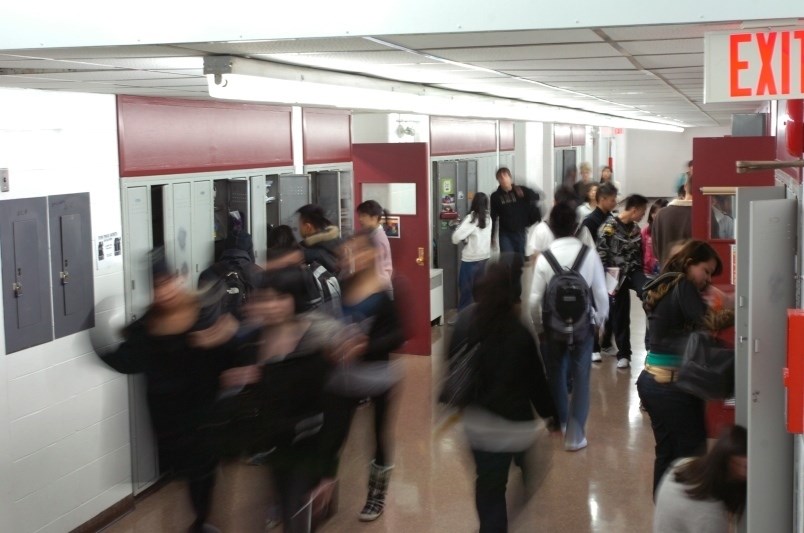Schools in B.C. will partially reopen starting June 1, with students having the option of attending classes part-time during the month.
Premier John Horgan made the announcement Friday, saying the move will pave the way for a “cleaner and smoother” reintroduction of full-time classes in September.
Parents will be able to decide if their children go back to school.
“It’s our genuine desire to make sure that no one feels pressured to do this,” Horgan said.
Students from kindergarten to Grade 5 will be in school half-time, possibly two or three days a week.
Education Minister Rob Fleming said elementary schools will be at 50% or less of their normal capacity. For Grades 6 to 12, students will likely be in classes one day a week in June, he said, with 20% of middle and secondary students in school at any one time.
Fleming said numbers of students are being carefully managed to allow for physical- distancing and to limit physical contact between students.
That will be accomplished by not only having students at school part-time but also staggering lunch breaks, recesses, drop-offs and pick-ups, Fleming said.
Horgan said it’s understandable that parents or children could be anxious about a return to class after schools were shut down across B.C. on March 17 due to the COVID-19 pandemic.
Parent Angela Carmichael, who has a son at Central Middle
School and another at George Jay Elementary School, said both of her children want to go back to school. She said she will let the older one decide for himself and will likely send the younger one back, depending on how the COVID-19 situation looks over the next week or so.
Carmichael said she was happy to hear school attendance won’t be mandatory. “Nobody wants to feel pressured to go against their gut feelings, especially when it comes to their children,” she said, adding some parents will choose not to send their kids until a vaccine is available.
Other parents are running out of options, she said. “There are a lot of people that still have to go to work, and the government isn’t necessarily topping up families enough for child care during a pandemic.”
Returning students and staff will be required to clean their hands when entering school property.
“There will be more hand-sanitizing and cleaning stations available, and staff and students and parents must do a self-assessment for symptoms of COVID-19, influenza, the common cold,” Fleming said.
Horgan said school openings would not be considered if the government felt there was an undue health risk.
Fleming said the weeks since schools were closed have been challenging for families.
“We understand how difficult this pandemic has been and continues to be on families right across British Columbia,” he said. “For many parents and guardians, this has meant trying to juggle work obligations while taking care of kids at home.
“While precautions like physical distancing and remote learning have been necessary to keep everyone safe, it hasn’t been easy.”
Many students are missing their time at school, and being able to see friends and teachers, Fleming said.
“School’s a place where kids learn how to connect with others,” he said. “It’s a place where they grow as people, and not having those places to learn and grow has been especially hard for children who need extra support or for kids who find that school is their safe haven in their lives.”
Fleming said the advice of provincial health officer
Dr. Bonnie Henry has been important in planning the opening.
Remote learning will continue for those who choose that option, Fleming said.
School leaders will be contacting families to see if they wish to have their children return to school, Fleming said, with details coming before May 22. Contact your school principal if you don’t hear by then, he said.
Asked if teachers will be required to return to the classroom June 1, he said there is a commitment to work at the local level with teachers.
Saanich Teachers’ Association president Don Peterson said the announcement of the partial reopening did not come as a surprise, but it could be a “significant challenge” for teachers to do both online and in-person teaching.
“Right now teachers are working full-time doing remote learning.”



